Supermicro SYS-1029P-WTRT Performance
For this exercise, we are using our legacy Linux-Bench scripts which help us see cross-platform “least common denominator” results we have been using for years as well as several results from our updated Linux-Bench2 scripts. Starting with our 2nd Generation Intel Xeon Scalable benchmarks, we are adding a number of our workload testing features to the mix as the next evolution of our platform.
At this point, our benchmarking sessions take days to run and we are generating well over a thousand data points. We are also running workloads for software companies that want to see how their software works on the latest hardware. As a result, this is a small sample of the data we are collecting and can share publicly. Our position is always that we are happy to provide some free data but we also have services to let companies run their own workloads in our lab, such as with our DemoEval service. What we do provide is an extremely controlled environment where we know every step is exactly the same and each run is done in a real-world data center, not a test bench.
We are going to show off a few results, and highlight a number of interesting data points in this article.
Python Linux 4.4.2 Kernel Compile Benchmark
This is one of the most requested benchmarks for STH over the past few years. The task was simple, we have a standard configuration file, the Linux 4.4.2 kernel from kernel.org, and make the standard auto-generated configuration utilizing every thread in the system. We are expressing results in terms of compiles per hour to make the results easier to read:
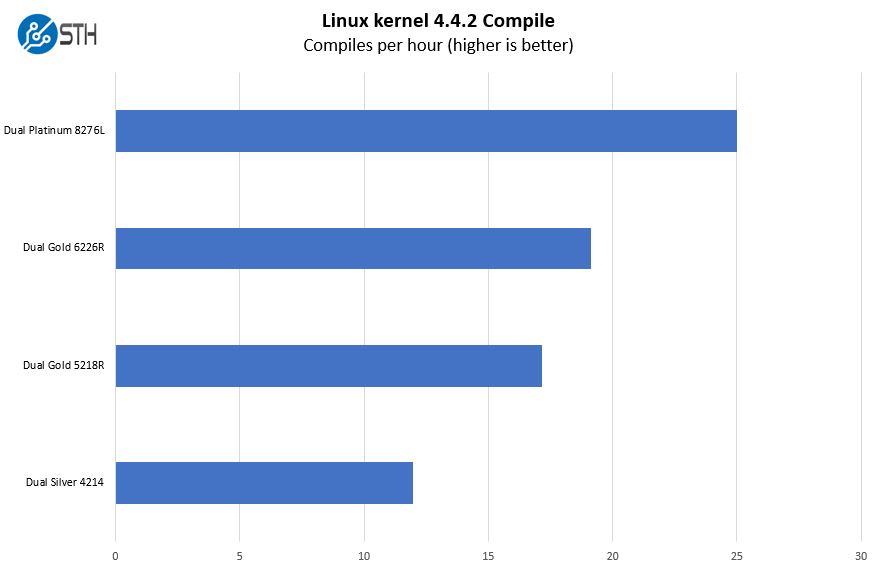
Here we wanted to highlight a few of the new 2nd Gen Intel Xeon Scalable Refresh SKUs along with some of the older generation parts. We do not have the Xeon Silver refresh SKUs yet, however, we did use two of the newer SKUs along with what may be the highest-end option in this system, the Intel Xeon Platinum 8276L. That “L” SKU is a 28-core part that can utilize the full 512GB Optane PMem / DCPMM configuration.
c-ray 1.1 Performance
We have been using c-ray for our performance testing for years now. It is a ray tracing benchmark that is extremely popular to show differences in processors under multi-threaded workloads. We are going to use our 8K results which work well at this end of the performance spectrum.
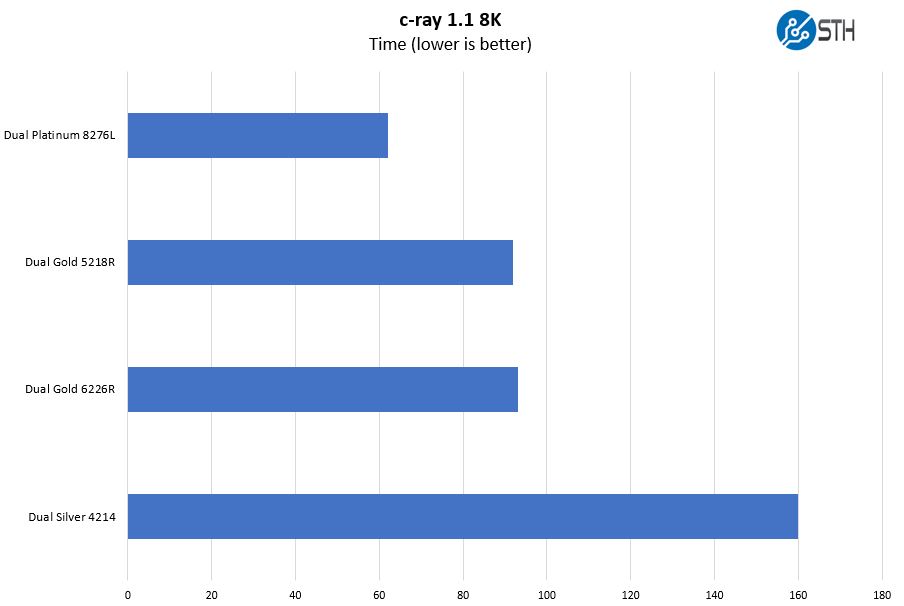
For this server, the new “R” SKUs make a lot of sense given their better performance per dollar than the older models.
7-zip Compression Performance
7-zip is a widely used compression/ decompression program that works cross-platform. We started using the program during our early days with Windows testing. It is now part of Linux-Bench.
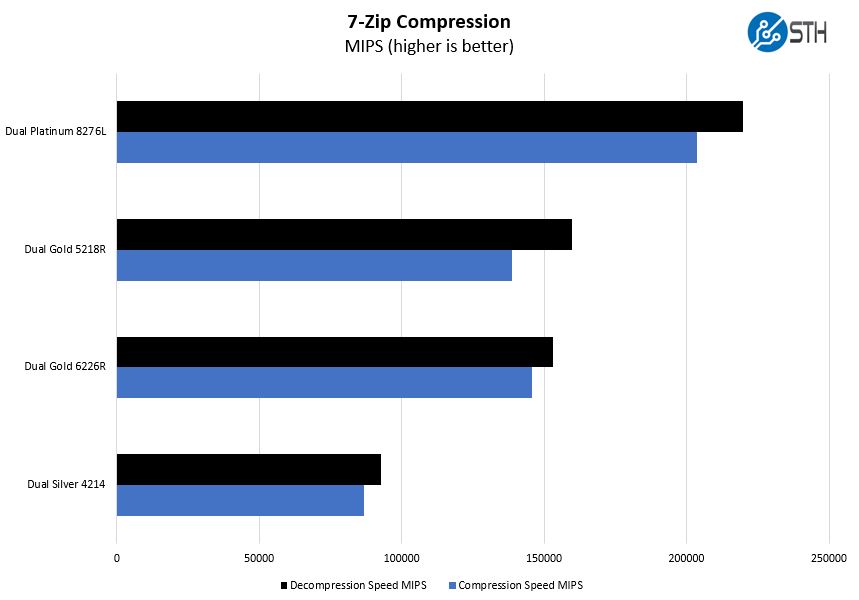
Compression is a big deal. Here, we see the dual Xeon Gold 5218R out-perform the Intel Xeon Gold 6226R despite the lower numerical value. Xeon processor numbering is not always sequential in terms of performance.
OpenSSL Performance
OpenSSL is widely used to secure communications between servers. This is an important protocol in many server stacks. We first look at our sign tests:
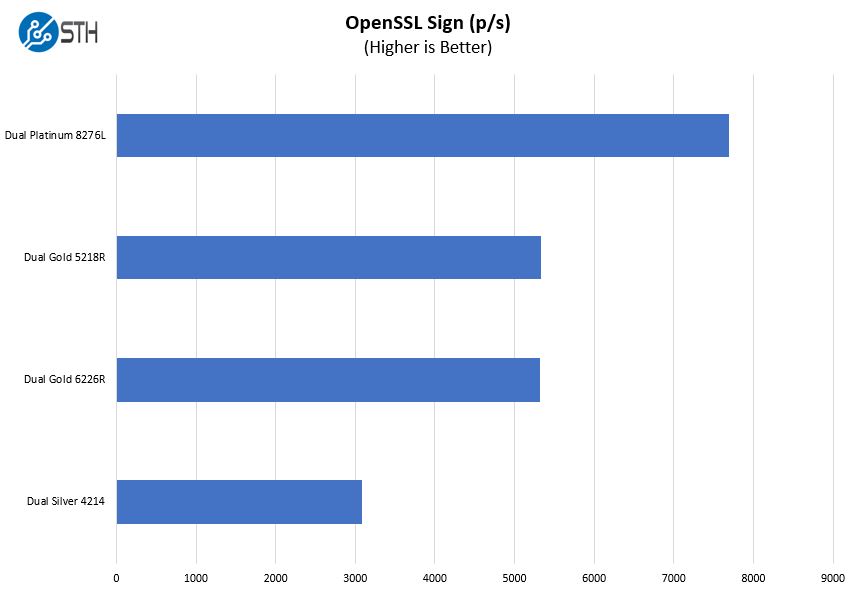
Here are the verify results:
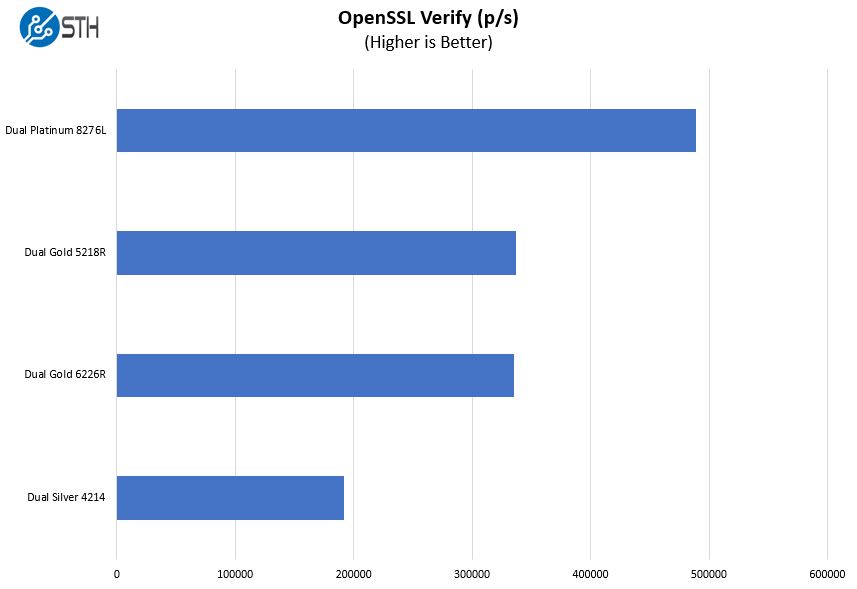
OpenSSL is a foundational web technology. For a server like the SYS-1029P-TNRT, OpenSSL is going to be a very common component of the workloads many of these servers run. If you are using the SYS-1029P-WTRT as a network appliance where cryptography is a major focus, using the PCIe expansion slots for accelerators may make sense.
Chess Benchmarking
Chess is an interesting use case since it has almost unlimited complexity. Over the years, we have received a number of requests to bring back chess benchmarking. We have been profiling systems and are ready to start sharing results:
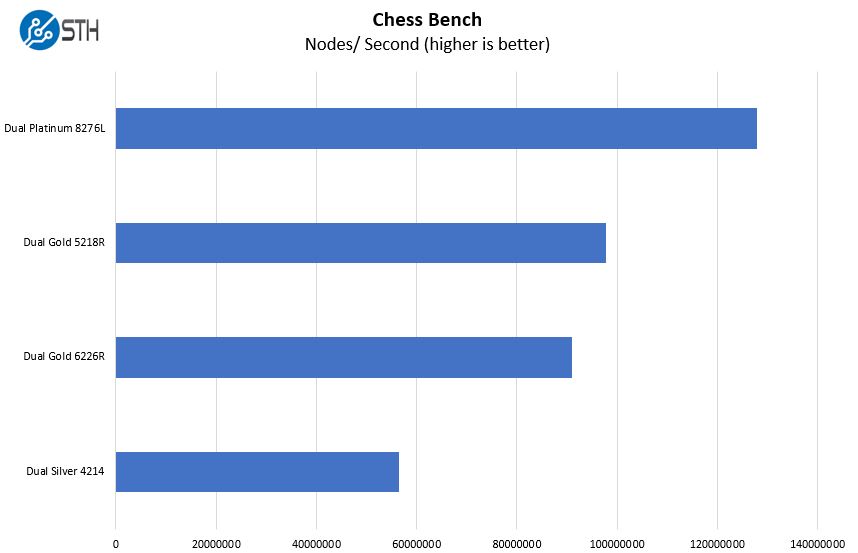
On the chess benchmarking side, we see something very similar to what we have seen in other tests. We are not going to get too far into this one.
GROMACS STH Small AVX2/ AVX-512 Enabled
We have a small GROMACS molecule simulation we previewed in the first AMD EPYC 7601 Linux benchmarks piece. We are not publishing results of the newer revision here since they are not compatible with our previous results.
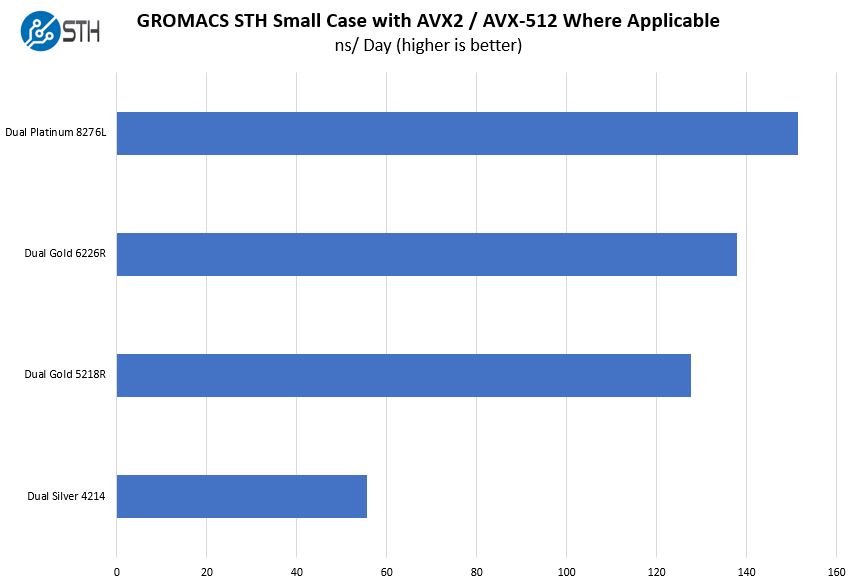
Here we can see performance sensitive to both core counts, but even more by TDP. The results are highly correlated to TDP increments. Also, the Xeon Silver is a single port FMA AVX-512 design with a lower TDP and lower core count, so it is significantly slower.
STH STFB KVM Virtualization Testing
One of the other workloads we wanted to share is from one of our DemoEval customers. We have permission to publish the results, but the application itself being tested is closed source. This is a KVM virtualization-based workload where our client is testing how many VMs it can have online at a given time while completing work under the target SLA. Each VM is a self-contained worker.
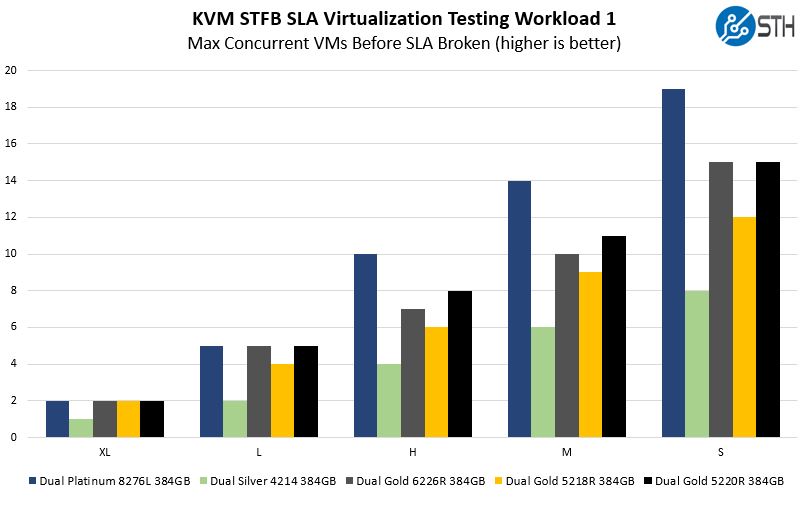
We just wanted to show a few configurations to show some of the range of performance one gets using the 2nd generation Intel Xeon Scalable family in the server. We added the dual Xeon Gold 5220R result from our previous Supermicro 2029UZ-TN20R25M Review here just to add some extra results to the chart in a common workload on this platform.
Next, we are going to cover power consumption before getting to the STH Server Spider and our final words.



